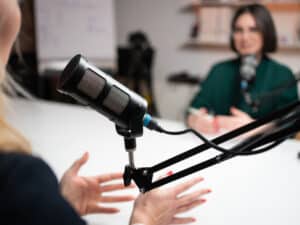International women’s day 2019: interview with Moira Roberts

Frazer Jones is proud to be supporting International Women’s Day 2019. International Women’s Day celebrates the social, economic, cultural and political achievements of women. Whilst we all know that gender parity within the workplace has improved over the past decades, we all also know that there is still a long way to go.
We would like to join the discussion and be part of International Women’s Day 2019 #BalanceforBetter campaign on the 8th March by interviewing inspiring women we work with and, in particular, understanding the role confidence has played in their career.
We interviewed Moira Roberts, Regional Head of HR, APAC, Middle East & Africa, MunichRe.
How do you define confidence, particularly in the workplace?
For me, confidence in the workplace is a self-belief that I am able to deliver on my objectives well, regardless of whether the work may be something new to me, and that I am a strong value-add to the organisation. At a deeper level, it is a self-belief that (a) I am capable of navigating through workplace culture, (b) I can build trust and respect to facilitate collaboration and partnership and (c) I am comfortable at managing conflict. As a leader, confidence is about being able to coach and mentor the next level to reach their potential, to be their bouncing board and to have the privilege to journey with them in their career development.
I also believe that confidence is about having the courage to be vulnerable in the workplace and to not be afraid to ask questions or for the relevant support in order to succeed. Too often, we worry that asking questions or asking for help are signs of weakness in the workplace, fearful that it could derail our career progress, or simply – create a negative impact on the perception others have of us. Confidence is about appreciating the bigger picture that such silent struggles at the workplace could potentially have the detrimental consequence of failure – for both the individual and the organisation.
Confidence is about owning my behaviours and actions in the workplace – and about being accountable for my decisions and the consequences, both good and bad, that arise from those decisions and actions. It is also about knowing when I need to take a step back from the workplace.
I see feedback as a gift – and confidence is about having the self-awareness to be open to feedback and giving ourselves the space to reflect on that feedback to improve. Especially from trusted confidantes in the workplace who can provide us with honest, objective and constructive feedback of our blind spots. At the same time, we need to be able to strike the fine balance between and separate feedback that may be personal criticism against our own self-worth. It is a thin line between arrogance and confidence – and we need to have the self-awareness to understand when we may have, ourselves, crossed that line.
Do you think women’s workplace confidence has improved over the past few decades? Please explain why.
Yes, it has. And it is not just about one thing.
The playing field has progressively been changing over the years. A couple of simple examples of such change is how education has become more accessible and how the traditional view that women are deemed the primary caregivers of their families has changed – we see a shift over the past 2-3 decades where familial responsibilities are being increasingly shared. Childcare and family care services have also grown and improved over the years – all these obviously impact more women returning to the workplace. If we think about it, it is not uncommon now for fathers to be stay-home dads, a notion that was quite rare a few decades ago.
As a result of more opportunities presenting themselves, and also the changing shift of the traditional view of what women can or should do, women around the world have become more visible and have been achieving much – in school, in sports, in politics, in the arts, at the workplace across all industries, in life. Every day we hear of stories that move us – that resonate with us – to feel the self-worth that “if she can do it, so can I”. And innately, we feel that confidence that women before us possess, and that fuels our self-worth – and in turn, our own confidence that “I can do it”.
Organisations are also appreciating the need to put in place tools and platforms for their talent to develop and to be successful. This can range from employee benefits that commensurate with our different life stages, to talent programmes that develop our potential in areas where there are gaps, to recruitment and promotion diversity slates that remind leaders to be mindful about unconscious bias. It is not merely about giving a job to an individual – but preparing an individual for a role, facilitating a support structure to ensure that the individual succeeds, and allowing and recognising the individual to achieve small milestones that lead to bigger goals.
There has also been an increased appreciation for sponsorship at the workplace – where senior leaders mentor and speak for their mentee when their mentee is not in the room. It opens the doors for women who may have been previously overlooked. It is very empowering – and a confidence booster – for any individual to know that a senior leader, someone they look up to, would endorse and vouch for them.
How can confidence-building be built into career development strategies?
Confidence must be built in increments. As the saying goes, Rome was not built in a day.
As part of our own career development strategy, we need to first build the foundation by understanding what causes self-doubt. At a start, each of us needs to first have a healthy level of self-awareness of our own competencies, abilities and gaps. This obviously means also that we need to each be open to constructive feedback, especially around our blind spots.
Once we have identified our gaps, we need to identify the priorities that we want to improve on. We need to be able to self-curate the tangible small milestones that we will aim to achieve – and with each achievement, our confidence will start to build. We must take ownership of our actions – or the consequences of our inactions, as the case may be.
It is important also to understand what are the triggers that bring on the self-doubt. What are our coping mechanisms when these triggers happen? Is there a strategy that we can practise so that it can become second nature when the trigger happens?
Workplace conflict is inevitable, and we should practise being comfortable with managing conflict. It is important also that we be curious – and practise being comfortable at asking questions. Get a mentor. Perhaps, in turn, think about being a mentor to someone junior – it is not uncommon that we gain self-confidence when we are in a position to help and guide others to succeed.
What can be done to ensure a woman being assertive in the workplace doesn’t negatively impact on colleagues’ perceptions of her?
Perception is subjective to each of us. It is often based on our own unconscious bias driven by our own backgrounds and experiences. And additionally, as a benchmark or standard against our own personal style or culture. Unconscious bias stems from general stereotypes that society has come to abide by and anyone who might breach any of these stereotype norms would invariably suffer some form of negative reprisal.
What is important is that everyone appreciates the impact that unconscious bias may have at the workplace. Unconscious bias impairs inclusion in the workplace, creates a culture of double-standards, facilitates unnecessary misunderstandings and conflict, hampers team and organisational culture – and even manifests a loss to the organisation through a talent drain. At its crux, each of us, and collectively the whole organisation, must appreciate that we need to be aware of our own bias and ultimately aim to create an organisational culture that the same behaviour exhibited by different genders, different cultures, different generations etc is not judged differently.
We should understand that assertiveness is a style of communication and a social skill that is not stereotypical or exclusive to only certain diversity demographics. It is about being able to communicate in a clear and succinct manner and at the same time, respecting the opinions of others. Too often, because of our own unconscious bias, we may judge a person who is being assertive in the workplace as “aggressive”, regardless of that person’s gender, culture, ethnicity, age, job role or any other diversity demographic. Until we have, as a society, broken down stereotypes and bias, we need to consider how we can manage our own communication without creating any negative perceptions.
Being assertive is about being open, direct and honest in our communication with others. It is about speaking simply and succinctly. It is about maintaining calmness during a conversation and active listening without interrupting. It is about respecting that others also have a view which may be different from ours – and not exert a power or pressure that your opinion or view is right and theirs is wrong. It is about framing your statements from your perspective and not frame your statements in a confrontational manner – “I” statements, rather than “you” statements.
On the flip side, we should be deliberately conscious of stereotypes bias. To consciously not hold double-standards across different diversity demographics that may exhibit the same behaviour. To call out stereotypes bias. To role-model inclusion. To take ownership that I can minimise the pervasiveness of unconscious bias at the workplace – and society.



